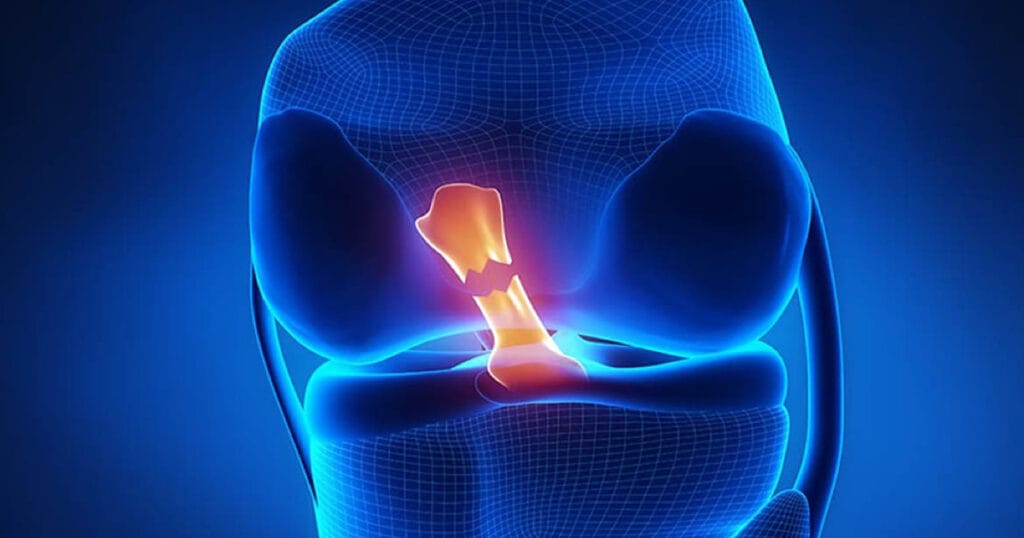Anterior Cruciate Ligament Injuries and Treatment Options
The knee joint is one of the most complex and vital joints of the body. One of the most important structures providing knee stability is the anterior cruciate ligament (ACL – Anterior Cruciate Ligament). Sports injuries and sudden traumas are the main causes of anterior cruciate ligament injuries. These injuries can lead to limitation of movement and decrease in quality of life, especially in individuals with active lifestyles.
What is anterior cruciate ligament?
The anterior cruciate ligament is a strong ligament that runs between the femur (thigh bone) and tibia (shin bone) in the knee joint. The main functions of this ligament are as follows:
- It provides stability to the knee joint by limiting excessive forward and lateral movements.
- It controls knee rotation movements.
- It helps to maintain balance in sports and daily activities.
- Causes of Anterior Cruciate Ligament Injuries
Anterior cruciate ligament injuries usually occur in the following situations:
- Sports Injuries: Sudden change of direction, quick stop, poor landing after a jump or collision.
- Traumas: High-energy trauma such as traffic accidents or falls.
- Physical Weakness: Weak musculature and lack of flexibility can increase the risk of injury.
What are the Symptoms?
Anterior cruciate ligament injuries are usually manifested by the following symptoms
- Sudden and severe pain in the knee
- Breaking or hearing a ‘click’ sound
- Rapidly developing swelling in the knee
- Feeling of instability and insecurity in the knee joint
- Limitation of movement
How is Diagnosis Made?
Diagnosis of anterior cruciate ligament injuries is made with detailed physical examination and imaging methods:
- Lachman Test and Pivot-Shift Test: These are physical tests that evaluate ligament stability.
- Magnetic Resonance Imaging (MRI): Used to determine the condition of the ligament and accompanying cartilage or meniscus damage.
Treatment Options
Treatment for anterior cruciate ligament injuries is planned depending on the severity of the damage, the patient’s age, activity level and expectations.
1. Conservative Treatment
Preferred in patients with partial tears of the ligament or low activity level:
- Rest: The load on the knee is reduced in the first stage of the injury.
- Physical Therapy: The aim is to strengthen the muscles around the knee and increase the range of motion of the joint.
- Ice Application: Applied regularly to reduce swelling and relieve pain.
- Knee Brace or Orthosis Use: Provides support in daily activities by increasing knee stability.
2. Surgical Treatment
Surgical treatment is recommended for individuals with complete tears or high physical demands such as active athletes:
- Anterior Cruciate Ligament Reconstruction: A new ligament is created in place of the damaged ligament with a graft taken from the patient’s own tissue (hamstring, patellar tendon) or donor tissue.
- Arthroscopic Surgery: Surgery performed with a minimally invasive method provides a faster recovery process.
Post-Operative Rehabilitation
Post-operative rehabilitation directly affects the success of ACL treatment. The rehabilitation process includes the following steps:
- Early Period (0-6 Weeks): Swelling control and increasing range of motion.
- Middle Period (6-12 Weeks): Increasing muscle strength and balance exercises.
- Late Period (3-6 Months): Sports-specific movements and functional training.
- Return to Sports (6-12 Months): Return to sports after full stability and muscle strength are achieved.
Ways to Prevent Anterior Cruciate Ligament Injuries
- Strengthen the Muscles Around the Knee: Having strong quadriceps and hamstring muscles increases knee stability.
- Do Flexibility Exercises: Flexibility of the muscles reduces the risk of injury.
- Use Correct Sports Techniques: It is especially important to develop jumping and landing techniques.
- Use Knee Pads: You can use knee pads that provide support in risky sports activities.
Anterior Cruciate Ligament injuries can be successfully managed with the correct diagnosis and treatment. Especially in active individuals, knee stability and mobility can be fully restored with the right rehabilitation programs applied after surgical treatment.

